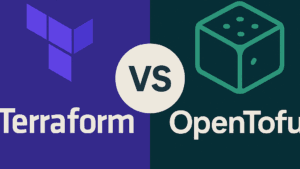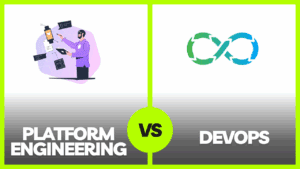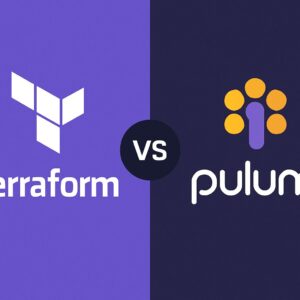In today’s rapidly evolving world of software development, achieving continuous integration and continuous delivery (CI/CD) has become a critical aspect for businesses looking to stay competitive. With the ever-increasing complexity of cloud-based infrastructure, organizations require a cloud agnostic approach to ensure their CI/CD processes can seamlessly adapt across different cloud providers. At SlickFinch, we understand the challenges that come with implementing CI/CD automation in a cloud agnostic environment. Our fully managed solutions combine cutting-edge technologies and expert guidance to help businesses streamline their software development pipeline, allowing them to deliver high-quality applications faster and more reliably. Contact us today, and let our expertise in cloud agnostic CI/CD automation empower your organization.

1. Overview of CI/CD Automation
1.1 CI/CD Automation: An Introduction
CI/CD (Continuous Integration/Continuous Deployment) automation has become an integral part of modern software development processes. It involves automating the build, test, and deployment stages of software development to enable faster and more efficient delivery of software products. By automating these processes, organizations can reduce manual errors, increase productivity, and achieve faster time-to-market.
1.2 Benefits of CI/CD Automation
Implementing CI/CD automation offers numerous benefits for software development teams. Firstly, it improves overall software quality by enabling continuous integration and testing of code changes. This ensures that any issues are caught early in the development process, reducing the risk of introducing bugs into the final product.
Additionally, CI/CD automation allows for faster and more frequent releases, enabling organizations to quickly respond to customer feedback and market demands. By automating the deployment process, teams can achieve faster time-to-market, gaining a competitive edge in the industry.
Moreover, CI/CD automation promotes collaboration among team members by providing a streamlined and standardized development workflow. It allows developers, testers, and operations teams to work together seamlessly, reducing silos and improving overall efficiency.
2. Understanding Cloud Agnostic Approach
2.1 What is a Cloud Agnostic Approach?
A cloud agnostic approach refers to the practice of designing and implementing software in a manner that is independent of any specific cloud provider. Rather than being tightly coupled to a particular cloud platform, a cloud agnostic approach allows applications and infrastructure to run on any cloud environment without requiring significant modifications.
This approach ensures that organizations are not locked into a specific cloud provider, providing them with flexibility and avoiding vendor lock-in. With a cloud agnostic approach, organizations can migrate their applications and infrastructure to different cloud platforms or even operate in a multi-cloud environment, selecting the best solutions from different providers.
2.2 Advantages of a Cloud Agnosticism CI/CD Automation
In the context of CI/CD automation, adopting a cloud agnostic approach offers several advantages. Firstly, it allows organizations to leverage the best features of different cloud providers when implementing their CI/CD pipelines. They can select the most suitable tools and services from various platforms, tailoring their automation processes to their specific needs.
Additionally, a cloud agnostic approach enhances portability and scalability. Organizations can easily migrate their CI/CD pipelines across different cloud environments as their needs evolve or as they seek cost optimization opportunities. This flexibility allows them to adapt to changing business requirements without the need for extensive re-architecting or re-engineering efforts.
Moreover, a cloud agnostic approach simplifies the integration and management of multiple CI/CD pipelines across different cloud platforms. Organizations can centralize their automation processes, monitor and manage them from a single dashboard, and enforce consistent practices across their entire software development lifecycle.
3. The Importance of Fully Managed Solutions
3.1 Exploring Fully Managed Solutions
In the context of CI/CD automation, fully managed solutions refer to cloud-based services that handle the infrastructure, configuration, and maintenance required for a streamlined and efficient CI/CD pipeline. These solutions take care of resource provisioning, scaling, and availability, enabling organizations to focus on their core development and deployment tasks.
Fully managed solutions typically include a range of features and functionalities tailored for CI/CD automation, such as built-in integrations with popular version control systems, automated testing frameworks, and deployment orchestration tools. These solutions eliminate the need for organizations to invest in building and managing their own CI/CD infrastructure, reducing operational overheads and minimizing time spent on infrastructure management.
3.2 Advantages of Fully Managed Solutions in CI/CD Automation
Adopting fully managed solutions for CI/CD automation offers significant advantages for organizations. Firstly, it allows teams to get up and running quickly, as these solutions provide a ready-to-use environment with pre-configured CI/CD tools and pipelines. This reduces the time and effort required to set up and maintain the infrastructure, enabling teams to focus on software development and delivery.
Furthermore, fully managed solutions provide scalability and performance optimizations out of the box. They can automatically adjust resource allocation based on demand, ensuring that teams have the necessary compute power and infrastructure to handle spikes in workload during peak development and deployment periods. This scalability eliminates the need for organizations to invest in overprovisioning resources, resulting in cost savings.
Moreover, fully managed solutions often come with built-in security measures and compliance certifications, ensuring that organizations can meet industry standards and regulatory requirements. These solutions provide features such as access controls, encryption, and audit trails, helping organizations maintain the security and integrity of their CI/CD pipelines.

4. Implementing CI/CD Automation with a Cloud Agnostic Approach
4.1 Choosing the Right Tools and Technologies
When implementing CI/CD automation with a cloud agnostic approach, selecting the right tools and technologies is crucial. Organizations should choose tools that provide compatibility and integrations with multiple cloud providers, allowing for seamless execution of CI/CD pipelines across different environments.
Open-source tools like Jenkins, GitLab CI/CD, and CircleCI are popular choices for implementing cloud-agnostic CI/CD automation. These tools offer extensive plugin ecosystems and integrations with various cloud providers, enabling organizations to tailor their pipelines to their specific requirements.
Additionally, organizations should consider using containerization technologies such as Docker or Kubernetes. Containers provide a lightweight and portable execution environment for CI/CD pipelines, ensuring consistency and compatibility across different cloud platforms.
4.2 Designing a Cloud Agnostic Architecture
Designing a cloud agnostic architecture is essential for ensuring portability and flexibility in CI/CD automation. Organizations should decouple their applications and services from cloud-specific services and features, leveraging more generic and portable solutions.
Implementing infrastructure-as-code (IaC) principles and practices can help achieve a cloud agnostic architecture. IaC involves defining infrastructure resources and configurations in a declarative manner, allowing for automated provisioning and management across different cloud environments. Tools like Terraform and AWS CloudFormation are commonly used for implementing IaC.
Furthermore, adopting microservices and loosely coupled architectures can enhance portability in CI/CD automation. By breaking down monolithic applications into smaller, independently deployable services, organizations can achieve better isolation, scalability, and flexibility, making it easier to migrate between cloud platforms.
4.3 Implementing CI/CD Pipelines in a Cloud Agnostic Manner
To implement CI/CD pipelines in a cloud agnostic manner, organizations should design their pipelines to be modular and independent of cloud-specific services. Each stage of the pipeline, such as code compilation, testing, and deployment, should be decoupled from the underlying cloud infrastructure.
Using containerization technologies like Docker, organizations can package their entire pipeline into containers, making it easier to deploy and execute the pipeline across different cloud environments. Additionally, organizations should leverage cloud-agnostic scripting languages and frameworks to ensure compatibility and portability.
Deploying the CI/CD pipeline in a cloud agnostic manner requires maintaining a consistent and standardized configuration across different cloud platforms. This can be achieved by using tools like configuration management and orchestration frameworks, such as Ansible or Chef, to ensure uniformity and reproducibility.
5. Leveraging Infrastructure as Code for Cloud Agnostic CI/CD Automation
5.1 Understanding Infrastructure as Code (IaC)
Infrastructure as Code (IaC) is a practice that involves managing and provisioning infrastructure resources programmatically through code. Instead of manually configuring infrastructure, IaC allows organizations to define infrastructure elements, such as virtual machines and networks, using code files that can be version controlled and automated.
5.2 Benefits of IaC in CI/CD Automation
In the context of CI/CD automation, leveraging IaC provides several benefits. Firstly, it enables the codification of infrastructure, allowing teams to define and manage infrastructure resources in a consistent and repeatable manner. This eliminates manual errors and ensures that infrastructure configurations are always up to date.
Using IaC also enhances collaboration and version control in CI/CD pipelines. Infrastructure code can be stored in version control repositories, enabling teams to track changes, review code, and roll back to previous versions if necessary. This promotes transparency and accountability in the development process.
Moreover, IaC facilitates the automated provisioning and management of infrastructure resources. Organizations can use tools like Terraform or AWS CloudFormation to define infrastructure requirements as code and then automatically provision and configure the required resources whenever needed. This eliminates the need for manual intervention, reducing the risk of human error and speeding up the CI/CD process.
5.3 Implementing IaC for Cloud Agnostic CI/CD Automation
To implement IaC for cloud agnostic CI/CD automation, organizations should define their infrastructure resources and configurations using cloud-agnostic programming languages and frameworks. This ensures that infrastructure code can be executed across different cloud platforms without requiring modifications.
Using IaC tools like Terraform, organizations can define infrastructure resources, such as virtual machines, networks, and databases, in a declarative manner. The infrastructure code can then be executed to provision the required resources on-demand, ensuring consistency and reproducibility across different environments.
Additionally, organizations can leverage configuration management tools like Ansible or Chef to automate the configuration and management of infrastructure resources. These tools allow organizations to define and apply configuration settings across different cloud platforms, ensuring uniformity and standardization.
6. Security and Compliance Considerations in Cloud Agnostic CI/CD Automation
6.1 Ensuring Security in a Cloud Agnostic Environment
Security is of paramount importance in cloud agnostic CI/CD automation. Organizations must ensure that their CI/CD pipelines and infrastructure configurations are secure and protected against potential threats and vulnerabilities.
To enhance security, organizations should implement robust authentication and access control mechanisms for their CI/CD pipelines. This includes using strong authentication methods, such as two-factor authentication, and implementing role-based access controls to restrict access to sensitive resources.
Additionally, organizations should regularly monitor and audit their CI/CD pipelines for potential security vulnerabilities. Automated vulnerability scanning tools can help identify and mitigate potential risks, ensuring that the pipelines are protected against common security flaws.
Furthermore, organizations should implement encryption mechanisms to protect sensitive data at rest and in transit. This includes encrypting communication channels, using encryption keys to secure data at rest, and adopting secure coding practices to prevent injection attacks.
6.2 Complying with Industry Standards and Regulations
In a cloud agnostic CI/CD automation environment, organizations must comply with industry standards and regulations to maintain data privacy and security. This includes adhering to frameworks and regulations such as ISO 27001, GDPR, and HIPAA, depending on the industry and region.
Organizations should regularly assess and audit their CI/CD pipelines for compliance with relevant standards and regulations. This includes conducting vulnerability assessments, penetration testing, and code reviews to ensure that the pipelines meet the necessary security and privacy requirements.
Implementing secure coding practices and following security-focused development methodologies, such as DevSecOps, can also help organizations maintain compliance with industry standards. By integrating security measures throughout the development process, organizations can minimize the risk of non-compliance and ensure the integrity of their CI/CD automation.
7. Monitoring and Analytics for Cloud Agnostic CI/CD Automation
7.1 Importance of Monitoring CI/CD Pipelines
Monitoring CI/CD pipelines is essential for ensuring their performance, availability, and reliability. By monitoring key metrics and indicators, organizations can identify bottlenecks, errors, and inefficiencies in their pipelines, enabling them to take proactive measures to address these issues.
Monitoring the duration and success rates of each stage in the CI/CD pipeline can help organizations identify potential performance bottlenecks. This includes tracking build times, test times, and deployment times to ensure that the pipeline is operating at optimal efficiency.
Additionally, organizations should monitor the availability and uptime of their CI/CD pipelines. This includes monitoring infrastructure components, such as servers, databases, and networking resources, to ensure that the pipelines are accessible and functioning properly.
7.2 Leveraging Analytics for Continuous Improvement
In addition to monitoring, organizations should leverage analytics to gain insights and drive continuous improvement in their cloud agnostic CI/CD pipelines. By analyzing historical data and trends, organizations can identify patterns and make data-driven decisions to optimize their automation processes.
Using analytics, organizations can identify areas of the pipeline that require improvement or optimization. This could include identifying and addressing frequent build failures, identifying slow-running tests, or optimizing deployment strategies to reduce downtime.
Furthermore, leveraging analytics can help organizations identify opportunities for resource optimization and cost savings. By analyzing resource utilization and performance metrics, organizations can identify overprovisioned resources or underutilized capacity, enabling them to optimize their resource allocation and reduce unnecessary costs.
8. Challenges and Best Practices in Cloud Agnostic CI/CD Automation
8.1 Overcoming Challenges in Cloud Agnostic CI/CD Automation
Implementing cloud agnostic CI/CD automation poses several challenges that organizations need to address to ensure successful adoption. One of the key challenges is managing the complexity of deploying and managing CI/CD pipelines across multiple cloud platforms. Organizations need to develop standardized practices, use consistent tooling, and establish clear governance to simplify the management of these pipelines.
Another challenge is achieving compatibility and portability across different cloud providers. Organizations should carefully select tools, technologies, and frameworks that offer strong compatibility with multiple cloud platforms. This ensures that the CI/CD pipelines can be seamlessly executed across different environments without requiring significant modifications. Kubernetes is a great choice to achieve this.
8.2 Best Practices for Successful Implementation
To successfully implement cloud agnostic CI/CD automation, organizations should follow certain best practices:
- Start by defining clear objectives and goals for the CI/CD automation initiative. This helps align the implementation with the organization’s overall business strategy and ensures that the automation efforts are focused on delivering value.
- Foster collaboration and communication among different teams involved in the CI/CD process, such as developers, testers, and operations. This ensures a shared understanding of the objectives and encourages cross-functional collaboration.
- Regularly evaluate and update the technologies, tools, and frameworks used in the CI/CD pipelines. This helps organizations stay current with the latest industry trends and ensures that the automation process remains efficient and effective.
- Continuously monitor and measure the performance and effectiveness of the CI/CD pipelines. This includes tracking metrics such as build success rates, deployment frequency, and time-to-market. Use these metrics to identify areas for improvement and drive continuous optimization.
- Regularly assess the security and compliance posture of the CI/CD pipelines. Conduct vulnerability assessments, penetration testing, and code reviews to identify and mitigate potential risks. Ensure that the pipelines adhere to industry standards and regulations.
- Leverage the expertise of experienced professionals and consult organizations like SlickFinch, who specialize in cloud agnostic CI/CD automation solutions. Their expertise and experience can help organizations navigate the complexities and challenges associated with implementing and managing CI/CD pipelines in a cloud agnostic manner.
9. SlickFinch: Your Experts in Cloud Agnostic CI/CD Automation
Implementing cloud agnostic CI/CD automation requires careful planning, expertise, and experience. SlickFinch specializes in cloud agnostic CI/CD automation solutions and can provide organizations with the necessary guidance and support throughout the implementation process. Whether it’s selecting the right tools and technologies, designing cloud agnostic architectures, or ensuring security and compliance, SlickFinch has the expertise to help organizations achieve their automation goals. Contact SlickFinch today to learn more about their cloud agnostic CI/CD automation services and how they can assist your organization in streamlining your software development and deployment processes.




